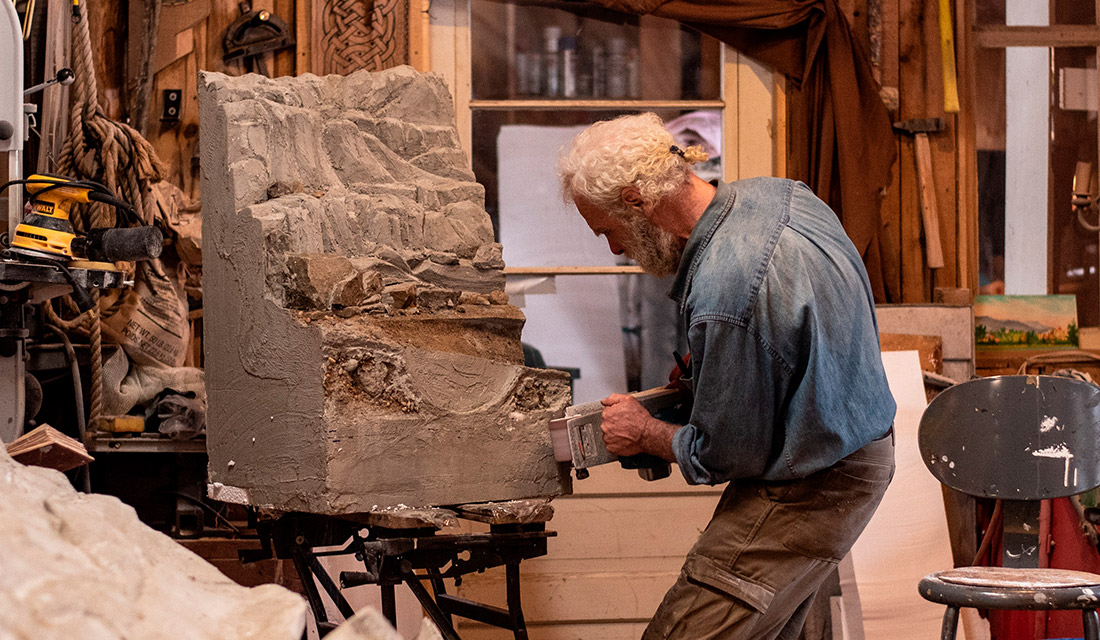Difference between revisions of "Types of manufacturing"
| Line 33: | Line 33: | ||
== Hybrid manufacturing == | == Hybrid manufacturing == | ||
Hybrid manufacturing (HM) techniques combine two or more different manufacturing concepts in order to combine their benefits. | Hybrid manufacturing (HM) techniques combine two or more different manufacturing concepts in order to combine their benefits. A good way to picture it is a pastry chef who builds a cake layer by layer, then trims its sides. | ||
Hybrid manufacturing is usually done by using two separate pieces of equipment, but all-in-one machines (eg. one that combines 3D printing with CNC milling) are already commercially available.<ref>{{Cite web|last=Molitch-Hou|first=Michael|title=Hybrid 3D Printing, Part 1: Introduction|url=https://3dprint.com/262291/hybrid-3d-printing-part-1-introduction-d/|url-status=live|website=3DPrint.com}}</ref> | Hybrid manufacturing is usually done by using two separate pieces of equipment, but all-in-one machines (eg. one that combines 3D printing with CNC milling) are already commercially available.<ref>{{Cite web|last=Molitch-Hou|first=Michael|title=Hybrid 3D Printing, Part 1: Introduction|url=https://3dprint.com/262291/hybrid-3d-printing-part-1-introduction-d/|url-status=live|website=3DPrint.com}}</ref> | ||
== References == | == References == | ||
Revision as of 07:16, 23 December 2021
Depending on the underlying concept, manufacturing technologies are broadly divided into four groups: additive, subtractive, formative and hybrid.[1]
Additive manufacturing
Additive manufacturing (AM) is a process whereby an object is constructed through depositing material in a controlled manner, layer by layer, until a full object is achieved. In more common terms, additive manufacturing is similar to bricklaying or making a cake layer by layer.
All 3D printing processes are based on the concept of additive manufacturing, and the two terms are used interchangeably.
3D printing offers a major benefit in the fact that no expensive tooling is necessary for individual designs, which greatly reduces the cost and lead time of making something. Because of this, AM is an excellent choice for rapid prototyping[2]. It is also great for one-off items or making spare parts.
3D printing also allows for manufacturing certain intricate shapes which are not feasible through traditional methods, such as hollow, nested or interconnected structures.
The cost-per-item of 3D printed parts is high compared to other techniques, and cannot be greatly reduced. Because of this, AM is rarely used for mass production.
Subtractive manufacturing
Subtractive manufacturing (SM) processes start out with a large block of material that is cut or chiselled down to the desired shape. For example, sculpting and whittling are subtractive manufacturing process.
In an industrial setting, subtractive manufacturing is almost always automated through computer numerical control (CNC). There is a very large variety of SM equipment that is based on this automation process, such as CNC mills, CNC drills, CNC lathes etc., so much so that the term has become synonymous with subtractive manufacturing itself,[citation needed] despite the fact that other kinds of machines also use numerical control (eg. 3D printers, robots).
CNC is generally used for medium-volume production, for parts with simple geometry.[1]
Formative manufacturing
In most formative manufacturing (FM) processes, a liquid is poured into a cavity, taking the cavity's shape as it hardens. Examples include different types of molding, forming and casting. Simple examples of the formative process are candle making or pouring cupcake batter into a tin.
Formative techniques such as injection molding are often used when a high volume of parts are produced, because fabricating the molds takes a high initial investment, but this mold can then be reused over and over again, reducing the eventual cost per item.
Hybrid manufacturing
Hybrid manufacturing (HM) techniques combine two or more different manufacturing concepts in order to combine their benefits. A good way to picture it is a pastry chef who builds a cake layer by layer, then trims its sides.
Hybrid manufacturing is usually done by using two separate pieces of equipment, but all-in-one machines (eg. one that combines 3D printing with CNC milling) are already commercially available.[3]
References
- ↑ 1.0 1.1 Sheku Kamara; Kathy S. Faggiani (25 May 2021). Fundamentals of Additive Manufacturing for the Practitioner. John Wiley & Sons. ISBN 978-1-119-75038-3.
- ↑ Ian Gibson; David Rosen; Brent Stucker (26 November 2014). Additive Manufacturing Technologies: 3D Printing, Rapid Prototyping, and Direct Digital Manufacturing. Springer. ISBN 978-1-4939-2113-3.
- ↑ Molitch-Hou, Michael. "Hybrid 3D Printing, Part 1: Introduction". 3DPrint.com.


